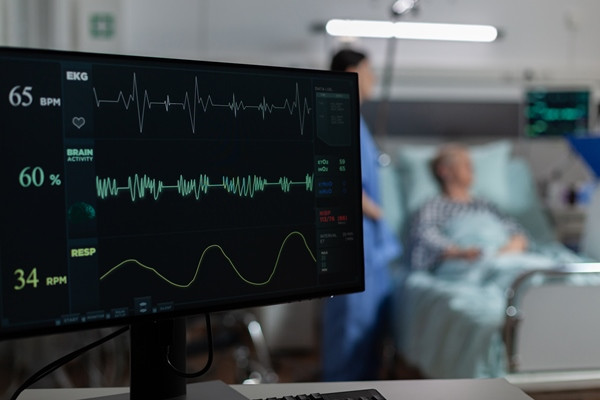Sklerosis Multipel
Pendahuluan dan Fakta
Multipel sklerosis (MS) merupakan penyakit autoimun inflamasi kronik pada sistem saraf pusat (SSP) yang menyebabkan kerusakan pada mielin. Diperkirakan terdapat sekitar 2,2 juta kasus MS di seluruh dunia pada tahun 2016, jumlah ini meningkat 10,4% lebih tinggi dibandingkan tahun 1990. Prevalensi MS semakin meningkat pada daerah yang semakin menjauhi ekuator, sedangkan Asia merupakan area dengan dengan frekuensi MS yang rendah, yaitu sekitar 30 kasus per 100.000 populasi.
Patofisiologi
Berdasarkan patofsiologi MS, diketahui bahwa karakteristik patologi MS adalah ditemukannya plak yang merupakan hasil dari demielinisasi, degradasi neuronal dan aksonal, serta jaringan parut astrosit. Pada seseorang yang memiliki kerentanan genetik terhadap MS akan terjadi reaksi silang antara antigen lingkungan dengan komponen mielin dan atau oligodendrosit atau protein mielin seperti protein S-100, fosfodiesterase, dan lain-lain. Hal ini memicu sensitisasi limfosit T sehingga bersifat autoreaktif terhadap mielin dan oligodendrosit yang telah mengalami reaksi silang tersebut. Jika antigen (yang bereaksi silang dengan mielin) memasuki tubuh, makrofag akan memfagositosis antigen tersebut. Antigen presenting cells (APC) seperti sel dendritik mempresentasikan antigen atau protein antigen ini dengan membentuk kompleks antara antigen dan major histocompatibility complex (MHC) pada permukaan sel. Kompleks antigen dengan MHC akan dikenali oleh reseptor pada permukaan sel limfosit T-CD4. Akibatnya sel tersebut akan teraktivasi dan berdiferensiasi menjadi sel T helper-1 (Th-1). Th-1 akan memicu sitokin proinflamasi yang selanjutnya akan mengaktivasi reseptor molekul adesi endotel pembuluh darah sawar darah otak. Akibatnya sawar darah otak menjadi lebih mudah dilalui oleh sel T
Setelah menembus sawar darah otak, Th-1 akan mengalami reaktivasi oleh APC, sedangkan antigen yang dibawa APC kali ini adalah protein mielin. Reaktivasi akan memicu sitokin proinflamasi, nitrit oksida, antibodi, komplemen, juga molekul-molekul yang memediasi apoptosis. Sitokin proinflamasi juga akan menstimulasi mikroglia dan astrosit, sehingga permeabilitas sawar darah otak menjadi semakin meningkat. Molekul kemotaksis yang memfasilitasi masuknya sel T, antibodi, dan makrofag juga ikut terstimulasi. Kaskade imun akan berakibat pada edema, demielinisasi, juga kematian akson.
Pada demielinisasi kronik, mikroglia akan teraktivasi yang mengakibatkan terbentuknya stres oksidatif. Hal ini akan memicu kerusakan mitokondria akson dan oligodendrosit. Selain itu, aktivasi mikroglia juga akan mempengaruhi transpor glutamat pada astrosit yang akan berakibat pada eksitotoksisitas neuronal dan oligodendrosit. Akumulasi lesi yang terjadi pada progresif MS berhubungan dengan degenerasi retrograd dan anterograd dari akson yang mengalami demielinisasi. Hal ini terjadi akibat eksitabilitas akson yang abnormal dan amplifkasi dari aktivasi mikroglia.
Karakteristik imunopatologi fase progresif yang paling relevan adalah adanya tipe demielinisasi yang tidak biasa yang dicirikan dengan adanya plak yang meluas secara perlahan beserta foamy macrophages yang mengandung lemak, khususnya di daerah subtansia alba.
Gejala klinis dan Komplikasi
Gejala klinis pasien MS umumnya dicatat oleh dokter hanya saat pasien berobat, dan terkadang pasien tidak rutin melakukan kontrol ke dokter. Padahal progresivitas gejala pasien bisa sangat bergantung pada penilaian dokter dengan menggunakan penghitungan skor disabilitas. Melakukan inisiasi perubahan pengobatan MS di awal kejadian progresivitas bisa menjadi salah satu faktor yang mempengaruhi prognosis pasien.
Pasien MS akan mengalami periode relaps-remisi pada awal perjalanan penyakitnya, namun beberapa akan mengalami perkembangan menjadi tahap yang semakin memburuk, yang biasanya disebut sebagai secondary progressive multiple sclerosis (SPMS)
Pasien dengan relapsing-remitting multiple sclerosis (RRMS) akan berkembang menjadi SPMS dalam 10 tahun pada 25% pasien, dalam 20 tahun pada 50% pasien, dan 30 tahun pada lebih dari 75% pasien. Mayoritas pasien akan mengalami konversi menjadi SPMS pada usia 40 tahun
Diagnosis
Berdasarkan konsensus yang ditetapkan oleh perkumpulan ahli internasional, SPMS didefnisikan sebagai suatu penyakit yang awalnya berupa RRMS kemudian diikuti oleh progresi dengan atau tanpa adanya relaps, remisi minor, dan plateau. SPMS juga didefnisikan sebagai terjadinya progresi disabilitas dengan meningkatnya nilai EDSS sebanyak 1 pada pasien dengan EDSS 5,5 atau meningkat 0,5 pada pasien dengan EDSS ≥6 tanpa adanya kejadian relaps, nilai EDSS minimum 4 dan nilai functional score (FS) bagian piramidal sebesar 2, dan terkonfrmasi adanya progresi dalam waktu ≥3 bulan. Akurasi defnisi ini mencapai 87% dibandingkan dengan diagnosis SPMS berdasarkan konsensus.
Gambaran dari pencitraan MRI kepala pada SPMS memperlihatkan lebih banyak lesi hiperintens pada T2 dibandingkan pada pasien dengan RRMS begitu juga dengan lesi fokal medula spinalis yang terlihat lebih banyak pada SPMS. Namun dari beberapa penelitian yang telah dilakukan, hal ini tidak selalu berkorelasi dengan disabilitas pasien. Jumlah lesi yang menyangat kontras cenderung berkurang pada pasien RRMS yang mulai memasuki fase progresif, karena lesi yang menyangat kontras menunjukkan aktivitas inflamasi dari penyakit ini. Jumlah lesi menyangat kontras saat awal merupakan prediktor yang signifkan untuk aktivitas lesi pada MRI berikutnya, tetapi hanya memprediksi evolusi klinis pada 2 tahun awal.
Tatalaksana dan Perawatan
Pilihan pengobatan untuk SPMS memang terbatas, namun tidak seperti primary progressive multiple sclerosis (PPMS), masih ada peluang untuk memberikan terapi pada fase relaps dengan inflamasi yang sedang berjalan. Pada beberapa penelitian mengenai pemberian interferon beta 1b (IFNB) yang telah dilakukan, terbukti bahwa IFNB dapat mengurangi jumlah laju relaps dan mengurangi jumlah lesi T2, namun pemberian IFNB tidak direkomendasikan pada pasien SPMS, karena ketika telah memasuki fase progresif, efek anti-inflamasi IFNB tidak dapat memperlambat laju progresivitas.
Glatiramer asetat dapat diberikan pada pasien RRMS yang berubah secara dini menjadi SPMS berdasarkan review dari Cochrane. Akan tetapi, bukti yang mendukung masih kurang kuat. Mitoxantron merupakan satu-satunya obat yang disetujui Badan Administrasi Obat dan Pangan Amerika (FDA) untuk SPMS, PRMS, dan RRMS yang memburuk. Metotrexat (MTX) merupakan agen imunosupresif yang digunakan pada berbagai penyakit reumatologi dengan efek samping yang terbatas dan harga yang murah. Cyclophosphamide (CPP) menunjukkan hasil yang lebih efektif berupa stabilisasi aktivitas penyakit dibandingkan penggunaan metilprednisolon intravena dalam menangangi SPMS, tetapi dengan profil toleransi obat yang rendah. Sedangkan azatioprin (AZA) yang cukup banyak digunakan pada pasien RRMS di Indonesia, memiliki bukti yang terbatas untuk digunakan pada pasien dengan SPMS. Penggunaan antibodi monoklonal CD20 dikatakan dapat dipakai sebagai terapi untuk MS progresif karena kemampuannya untuk mengurangi sel B perifer yang secara tidak langsung juga mempengaruhi populasi sel B di sistem saraf pusat.
Referensi: Devianca N, Maharani K, Imran D, Estiasari R. Secondary progressive multiple sclerosis, clinical diagnosis and management. Neurona 2020;37(3):202-8.














